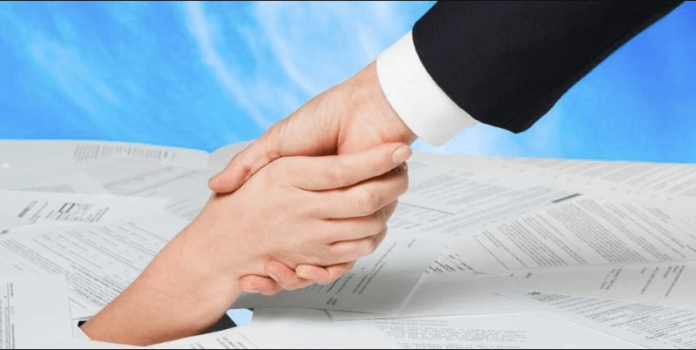When it comes to small businesses and their financial needs, the Economic Injury Disaster Loan (EIDL) program has been a lifeline for many. However, understanding the intricacies of loan forgiveness can be overwhelming. In this article, we will delve into the topic of EIDL loan forgiveness, providing you with a clear understanding of the process and requirements. Whether you are a small business owner or an aspiring entrepreneur, this guide will help you navigate the path to loan forgiveness successfully.
Table of Contents
- Understanding the EIDL Program
- Eligibility for Loan Forgiveness
- Determining the Forgivable Amount
- Documentation and Recordkeeping
- Applying for Loan Forgiveness
- Review Process and Timelines
- Potential Tax Implications
- Common Misconceptions about EIDL Loan
- Alternative Options for Small Businesses
- Tips for Successful Loan Forgiveness
- Conclusion
- FAQs
Understanding the EIDL Program
Small Business Administration (SBA), provides financial assistance to small businesses affected by declared disasters. The loans are intended to cover working capital needs and can be used for various operational expenses, such as payroll, rent, and inventory.
Eligibility for EIDL Loan Forgiveness
To be eligible for EIDL loan forgiveness, certain criteria must be met. Firstly, the loan must have been used for authorized purposes, primarily to cover expenses related to business operations. Secondly, the business must demonstrate a substantial economic injury due to the disaster. Lastly, the borrower must meet the SBA’s requirements for loan forgiveness, which include maintaining employee headcount and wage levels.
Determining the Forgivable Amount
The forgivable amount of an EIDL loan depends on several factors. Generally, the SBA forgives the portion of the loan used for authorized expenses during the covered period. However, the forgiveness amount cannot exceed the loan principal. It is important to meticulously track and document the eligible expenses to ensure accuracy during the forgiveness process.
Documentation and Recordkeeping
Proper documentation and recordkeeping are vital for loan forgiveness. Maintaining detailed records of expenses, payroll reports, invoices, and bank statements will facilitate the forgiveness application and review process. It is advisable to consult with an accountant or financial professional to ensure compliance with the SBA’s documentation requirements.
Applying for EIDL Loan Forgiveness
To apply for loan forgiveness, borrowers must submit the appropriate application form, along with supporting documentation, to the SBA. The application requires detailed information about the loan, the business, and the expenses incurred. It is crucial to complete the application accurately and provide all requested documents to avoid delays or potential issues during the review process.
Review Process and Timelines
Once the forgiveness application is submitted, the SBA reviews the documentation to ensure compliance with their guidelines. The review process may take several weeks or even months, depending on the complexity of the application and the volume of applications being processed. It is important to be patient and maintain open communication with the SBA throughout the review period.
Potential Tax Implications
It is essential to consider the potential tax implications of EIDL loan. While the forgiven amount is not considered taxable income, certain expenses paid with forgiven funds may not be tax-deductible. Consulting with a tax professional will provide clarity on the tax consequences specific to your business and ensure compliance with tax regulations.
Common Misconceptions about EIDL Loan Forgiveness
There are several common misconceptions surrounding loan forgiveness. One prevalent misconception is that all EIDL loans are automatically forgiven. However, forgiveness is contingent upon meeting specific criteria and submitting a proper forgiveness application. Another misconception is that forgiveness applies to all expenses incurred by the business during the covered period. In reality, only authorized expenses are eligible for forgiveness.
Alternative Options for Small Businesses
If a small business does not meet the criteria for loan forgiveness or requires additional financial assistance, there are alternative options available. These include exploring other SBA loan programs, seeking grants, or considering private financing options. It is advisable to assess the unique needs of the business and explore all available avenues for financial support.
Tips for Successful Loan Forgiveness
To maximize your chances of successful loan forgiveness, follow these tips:
- Keep accurate and detailed records of all eligible expenses.
- Stay updated on the latest guidelines and requirements from the SBA.
- Seek professional advice from accountants or financial experts specializing in small business loans.
- Maintain open communication with the SBA throughout the forgiveness process.
- Submit the forgiveness application and supporting documents in a timely manner. Read more…
Conclusion
EIDL loan forgiveness can provide significant relief to small businesses impacted by disasters. Understanding the intricacies of the process and adhering to the SBA’s guidelines are essential for a successful outcome. By following the steps outlined in this guide, you can navigate the path to EIDL loan with confidence, ensuring the long-term financial health of your business.
FAQs
1. How long does the EIDL forgiveness process take? The review process for EIDL loan can take several weeks or months, depending on the complexity and volume of applications being processed.
2. Can all expenses incurred during the covered period be forgiven? No, only authorized expenses related to business operations are eligible for forgiveness.
3. Are EIDL loans automatically forgiven? No, forgiveness is not automatic. Borrowers must meet specific criteria and submit a proper forgiveness application to be considered for loan forgiveness.
4. What are the potential tax implications of loan forgiveness? While the forgiven amount is not taxable income, certain expenses paid with forgiven funds may not be tax-deductible.
5. Are there alternative options for small businesses if they do not qualify for EIDL loan? Yes, alternative options include exploring other SBA loan programs, seeking grants, or considering private financing options. Assess your business needs and explore all available avenues for financial support.

